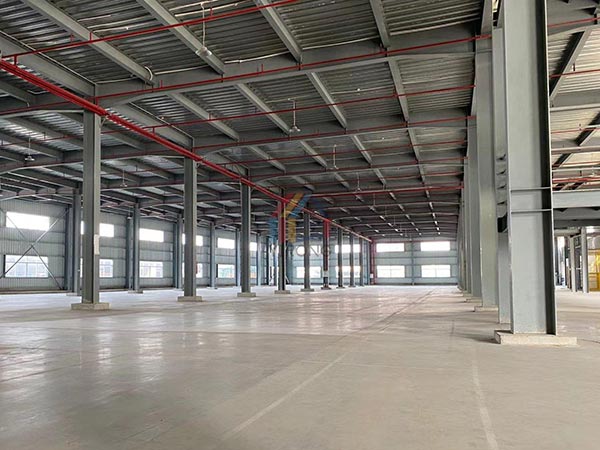Design of wind-resistant columns in the steel workshop construction
In the steel workshop construction, the design of wind-resistant columns is a very important part. The design of the wind-resistant column is directly related to the stability and safety of the entire steel structure workshop. In the construction of steel factory buildings, the design of wind-resistant columns needs to consider many factors, including wind load, shape and material of columns, etc.
First, the design of wind-resistant columns needs to consider wind loads. Wind load is the pressure exerted by wind on the surface of a building. As a tall building, the steel workshop building is easily affected by wind, so the wind load needs to be taken into consideration when designing wind-resistant columns. In general, the magnitude of the wind load is related to the height and shape of the building. For taller steel structure workshop, the wind load is greater, so the design of the wind-resistant columns needs to be stronger.
Secondly, the shape of the wind-resistant columns is also an important factor in the design. The shape of the wind-resistant column directly affects its stress and stability. Generally speaking, the shape of the wind-resistant column should be as regular as possible to avoid sharp corners or unevenness. The regular shape can reduce the wind resistance and improve the stability of the wind-resistant column. In addition, the cross-sectional shape of the wind-resistant column also needs to be reasonably selected. Common cross-sectional shapes of wind-resistant columns are circular, rectangular, square, etc. The efficiency of material use and the overall stability of the structure need to be taken into account when selecting the cross-sectional shape.

Finally, the material selection of the wind-resistant columns are also an important part of the design. Common wind-resistant column materials include steel and concrete. Steel has high strength and rigidity and is suitable for the design of wind-resistant columns. When selecting steel, factors such as the strength, toughness, and corrosion resistance of the material need to be considered. In addition, the connection method of the wind-resistant columns also needs to be considered. The connection method can directly affect the overall stability of the wind-resistant column. Common connection methods include welding and bolting. When choosing a connection method, it is necessary to consider its bearing capacity and convenience of construction.
To sum up, the design of wind-resistant column is very important in the steel workshop construction. Reasonable design of wind-resistant columns can improve the stability and safety of steel structure workshop. Factors such as wind load, shape, and material need to be considered when designing wind columns. The size of the wind load is related to the height and shape of the building. The shape of the wind-resistant column should be as regular as possible to avoid sharp corners or unevenness. The material selection of the wind-resistant column needs to consider factors such as the strength, toughness and corrosion resistance of the material. The connection method also needs to choose a suitable method to improve the overall stability of the wind-resistant column. Only by comprehensively considering these factors can we design stable and reliable wind-resistant columns to ensure the safe operation of steel workshops.












